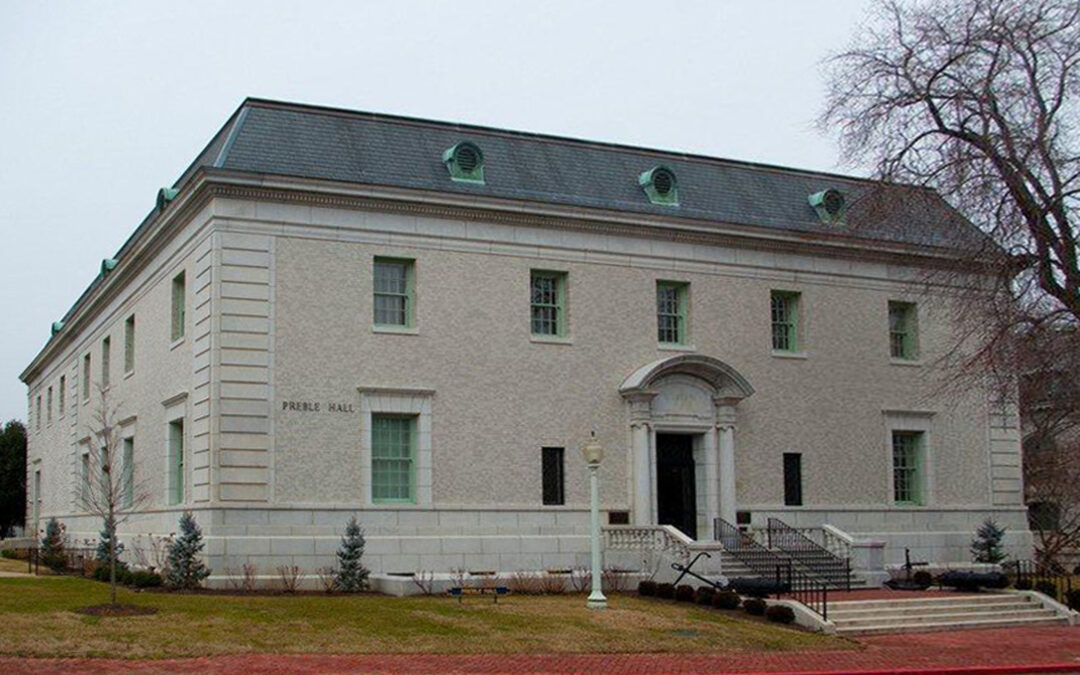An undated file photograph shows Preble Hall, which houses the U.S. Naval Academy Museum. (U.S. Navy photo/Released)
The history of the U.S. Naval Academy Museum begins in 1845, established as the Naval School Lyceum; the Lyceum brought together a collection of historical and natural objects, scientific equipment and models, and works of art for study and discussion.
Over the next 177 years, the Lyceum would change its name, and its collection grew thanks to significant contributions from private individuals and groups. Now the U.S. Naval Academy Museum welcomes more than 100,000 visitors annually from all over the world. Located in Preble Hall at the U.S. Naval Academy, it offers two floors filled with exhibits detailing the history of seapower, the development of the U.S. Navy, and the role of the U.S. Naval Academy in commissioning officers capable of leading America’s Navy and Marine Corps.
The museum’s displays combine historical artifacts with video and audio technology to bring to life the stories of the men and women who have served their country at sea. The museum’s collection includes ship models, artwork, flags, uniforms, weapons, medals, literature, photographs, ship instruments, and a wide variety of personal memorabilia. Particularly noteworthy is “The Beverley R. Robinson Collection,” which contains 6000 prints that reflect the naval history of Europe and the New World from 1514 through World War II.
Exceptional in scope and quality, the prints reflect naval history, represented in high-quality woodcuts, etchings, line engravings, mezzotints, aquatints, and lithographs. These stunning works of art culminate a lifetime of collecting by Mr. Beverley Randolph Robinson. Mr. Robinson, a graduate of Harvard College and Columbia Law School, was a distinguished New York attorney who scoured the galleries of the United States and Western Europe in search of prints that canonized the nature of naval warfare, principally in the age of fighting sail from the 1600s through the early 1800s.
Offering to loan his collected works to the U.S. Naval Academy in 1933 and indicating his intention to bequeath them to the Academy’s museum, he began sending prints in 1938 to coincide with opening a new repository: Preble Hall, the museum’s current site. Until his death in 1951, Mr. Robinson continued to add historically significant prints to the collection. As written in his will, in 1973, a substantial trust fund was established to perpetuate the collection’s care, maintenance, and enlargement.
The museum’s second floor is just as noteworthy; a model shipbuilder’s dream, the second floor’s exhibit is the home to the Class of 1951 Gallery of Ships, the Rogers Ship Model Collection, and The Naval Academy’s bone model collection.
One of the world’s finest collections of warship models from the 17th, 18th, and 19th centuries, the supreme craftsmanship rendered these models into the exquisite works of art they are today, often constituting the only surviving physical record of ships built during the classic Age of Sail. The collection represents almost every rate and type of warship built between the mid-1600s and the 1840s; it has a “first rate” ship-of-the-line to a “sixth rate” vessel, a royal yacht, an admiral’s barge, and several ships’ boats. Its bone model collection is one of the largest globally, poignant and fascinating, as French prisoners of war craved these ship models during their incarceration from the bones of their beef rations.
The U.S. Naval Academy Museum is a real treat for families and Naval History enthusiasts alike. To learn more about the museum, visit https://bit.ly/3G4iOGz.

